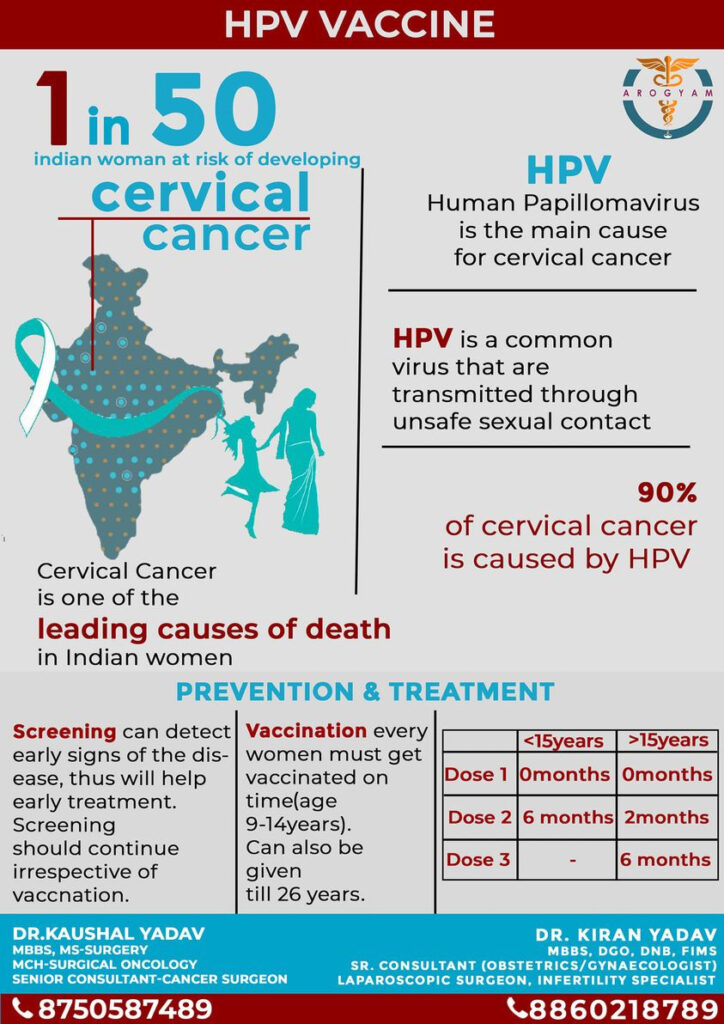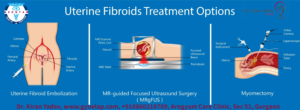How to Prevent Cervical Cancer: A Comprehensive Guide
Cervical cancer is one of the most preventable types of cancer, largely thanks to the availability of vaccines, regular screening tests, and lifestyle modifications. Understanding how to prevent cervical cancer is crucial for reducing its incidence and promoting women’s health. This guide covers effective strategies and steps you can take to minimize the risk of cervical cancer.
1. Get Vaccinated Against HPV
Human papillomavirus (HPV) is the primary cause of cervical cancer. There are more than 100 types of HPV, and some high-risk types, such as HPV 16 and HPV 18, are responsible for most cervical cancer cases. Vaccination is one of the most effective ways to prevent cervical cancer.
HPV Vaccination: The HPV vaccine is recommended for preteens, boys and girls, typically at ages 11 or 12, but it can be given as early as age 9. It is also recommended for everyone up to age 26 if they did not get vaccinated when they were younger. In some cases, vaccination is advised for adults aged 27 through 45 based on individual risk factors.
Effectiveness: The HPV vaccine is highly effective at preventing infection with the types of HPV that most commonly cause cervical, vaginal, and vulvar cancers. By getting vaccinated before being exposed to the virus, the risk of developing cervical cancer is significantly reduced.
2. Regular Cervical Cancer Screening
Regular screening can detect precancerous changes in the cervix early when they are most treatable. Two primary tests are used for cervical cancer screening:
Pap Smear (Pap Test): The Pap test involves collecting cells from the cervix and examining them for abnormalities. It is recommended that women start getting Pap tests at age 21 and continue every three years if results are normal.
HPV Test: The HPV test checks for the presence of high-risk HPV types in the cervical cells. Women aged 30 and older are recommended to have an HPV test every five years, either alone or in combination with a Pap test (co-testing). Women aged 21-29 should have a Pap test alone every three years.
Follow-Up: If a screening test shows abnormal results, further testing or a colposcopy (a detailed examination of the cervix) may be needed to determine the presence of precancerous changes or cervical cancer. Early detection through regular screening is key to successful treatment and preventing cancer progression.
3. Practice Safe Sex
Since HPV is a sexually transmitted infection, practicing safe sex can reduce the risk of HPV transmission and, consequently, cervical cancer.
Condom Use: Using condoms during sexual intercourse can lower the risk of HPV infection. While condoms do not provide complete protection against HPV, they significantly reduce the chances of transmission.
Limit Sexual Partners: Having multiple sexual partners increases the risk of HPV infection. Limiting the number of sexual partners and maintaining a monogamous relationship can reduce exposure to HPV.
Regular STI Testing: Regular testing for sexually transmitted infections (STIs) can help detect and manage infections early, reducing the risk of HPV and other related complications.
4. Avoid Smoking
Smoking is a known risk factor for cervical cancer. The chemicals in tobacco smoke can damage the DNA of cervix cells, making them more susceptible to HPV infection and the development of cancer.
Quit Smoking: Quitting smoking can lower the risk of cervical cancer and improve overall health. Various resources, such as counseling, support groups, and smoking cessation programs, are available to help individuals quit smoking.
Avoid Secondhand Smoke: Exposure to secondhand smoke can also increase the risk of cervical cancer. Reducing exposure to secondhand smoke is an important preventive measure.
5. Maintain a Healthy Immune System
A strong immune system helps the body fight off infections, including HPV. Certain factors can weaken the immune system and increase the risk of HPV infection and cervical cancer.
Healthy Diet: Eating a balanced diet rich in fruits, vegetables, whole grains, and lean proteins supports a healthy immune system. Nutrients like vitamins C, E, and beta-carotene, found in fruits and vegetables, have antioxidant properties that protect against cellular damage.
Regular Exercise: Engaging in regular physical activity boosts the immune system, helps maintain a healthy weight, and reduces inflammation. Exercise can also improve mental health and reduce stress, which can have a positive impact on overall health.
Adequate Sleep: Getting enough sleep is crucial for immune function. Aim for 7-9 hours of sleep each night to support immune health and overall well-being.
6. Regular Health Check-Ups
Regular visits to a healthcare provider can help monitor overall health and address any risk factors for cervical cancer.
Discuss Vaccination and Screening: Healthcare providers can offer guidance on HPV vaccination and the appropriate screening schedule based on age, medical history, and risk factors.
Manage Chronic Conditions: Chronic conditions, such as HIV/AIDS, can weaken the immune system and increase the risk of HPV infection. Managing chronic conditions with the help of a healthcare provider is important for reducing the risk of cervical cancer.
7. Awareness and Education
Knowledge is a powerful tool in the fight against cervical cancer. Being informed about the risk factors, symptoms, and preventive measures can empower individuals to take proactive steps to protect their health.
Learn About HPV and Cervical Cancer: Understanding how HPV is transmitted and how it can lead to cervical cancer is crucial for prevention. Stay informed about the latest guidelines for vaccination and screening.
Spread Awareness: Sharing information about cervical cancer prevention with friends, family, and the community can help raise awareness and encourage others to take preventive measures.
Conclusion
Cervical cancer is largely preventable through vaccination, regular screening, safe sexual practices, and a healthy lifestyle. By taking these proactive steps, individuals can significantly reduce their risk of cervical cancer and contribute to the overall goal of eradicating this disease. Early detection and prevention are key to saving lives and promoting the health and well-being of women everywhere. Empowering individuals with knowledge and access to preventive care is essential for achieving a future where cervical cancer is no longer a threat.
Dose & Schedule of HPV vaccine
Important Advise
Screening for cervical cancer should continue despite vaccination as recommended i.e. Pap Smear every 3 years or Pap with HPV every 5 years in 21-65 years








Pingback: Gynecological Health: Importance, Key Areas, and Preventive Care - gynelap.com